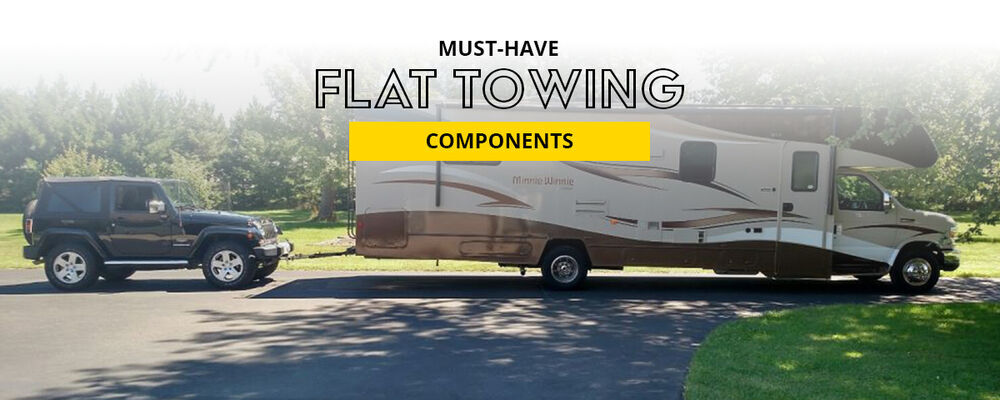
DO NOT TRY TO FLAT TOW WITHOUT THIS EQUIPMENT!
A base plate kit installed on your toad A tow bar to connect your toad to your RV Safety cables in case the tow bar fails Wiring to synchronize your RV’s and toad’s lights A supplemental braking system to synchronize your RV’s and toad’s brakes
1. Base Plate Kits

Frame bracket(s): Mount directly to the toad's frame Draw bar arms: Provide attachment points for the tow bar Removable arms attach to frame brackets using a pin/clip or twist-lock feature. They create a cleaner look with no visible parts when the arms are removed. Fixed arms are welded to the frame bracket and are visible at all times. They are typically the more economical option.
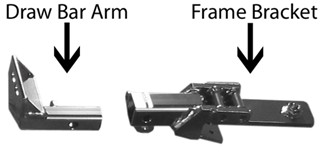
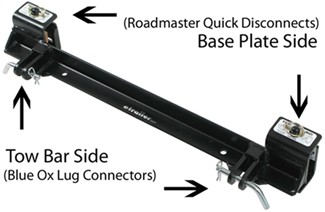
2. Tow Bars
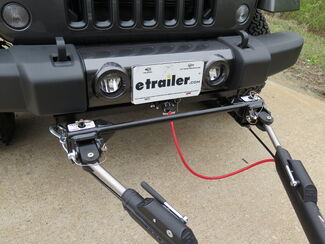
Sturdy, stable connection - Because you don’t have a coupler on this style of tow bar, there’s one less point of potential uncoupling from your RV. Safe, secure storage - Once you’ve installed your RV-mounted tow bar in your RV’s hitch receiver, it can be folded up to remain on the rear of your RV for storage. And it’s easy to keep safe by using a locking hitch pin. Less hassle - Because your tow bar stays on the back of your RV, this also equates to less hassle. You won’t have to strain yourself, lugging your tow bar out of storage every time you want to flat tow. Easy to adjust - As I’ll discuss later, your tow bar needs to be practically parallel to the ground. With a hitch receiver high-low adapter, you can easily get your tow bar level.
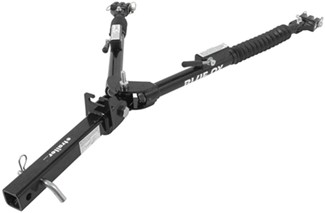






A: Measure the height from the center of your hitch pin hole on the RV to the ground. B: Measure the distance from the center of your dinghy's draw bar arms (when installed in frame brackets) to the ground. A - B = C: Subtract the difference (A - B). If there is more than a 3-inch difference, a hitch adapter is needed.

3. Safety Cables
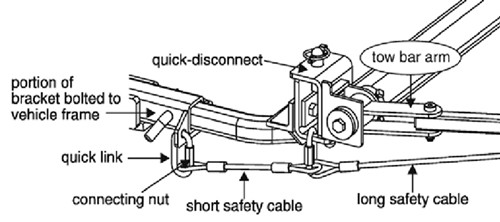
4. Tow Bar Wiring
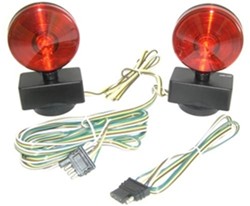
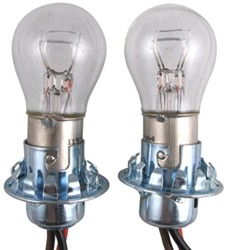
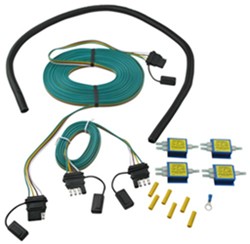
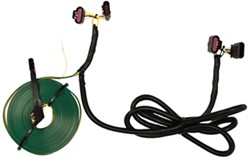
5. Supplemental Braking Systems


Departments
Towing
- Trailer Hitch
- Fifth Wheel
- Gooseneck
- Towing a Vehicle
- Front Hitch
- RV Hitch
- ATV Hitch
- HD Truck Hitch
- Vehicle Wiring
- Brake Controller
- Ball Mounts
- Weight Distribution
Sports and Recreation
Trailer Parts
- Utility Trailer
- Boat Trailer
- Landscape Trailer
- Enclosed Trailer
- 5th/Camper Trailer
- Car Hauler
- Horse Trailer
Vehicle
Contact & Help

What our customers are saying:
"Very helpful/friendly Customer Service. Competitive Pricing. Shipping was Fast."
John
Mankato, MN
Popular Vehicles
- Subaru Forester
- Ford F-350 Super Duty
- Ford F-250 Super Duty
- Chevrolet Silverado 1500
- Jeep Wrangler Unlimited
- Jeep Wrangler
- Ram 3500
- Toyota Highlander
- Ram 2500
- Chevrolet Silverado 2500
- Subaru Outback Wagon
- Chevrolet Silverado
- Dodge Ram Pickup
- GMC Sierra 2500
- Ram 1500
- Ford F-250 and F-350 Super Duty
- Jeep Grand Cherokee
- Toyota Tacoma
- GMC Sierra 3500
- Toyota Tundra
- Ford Escape
- More >>

